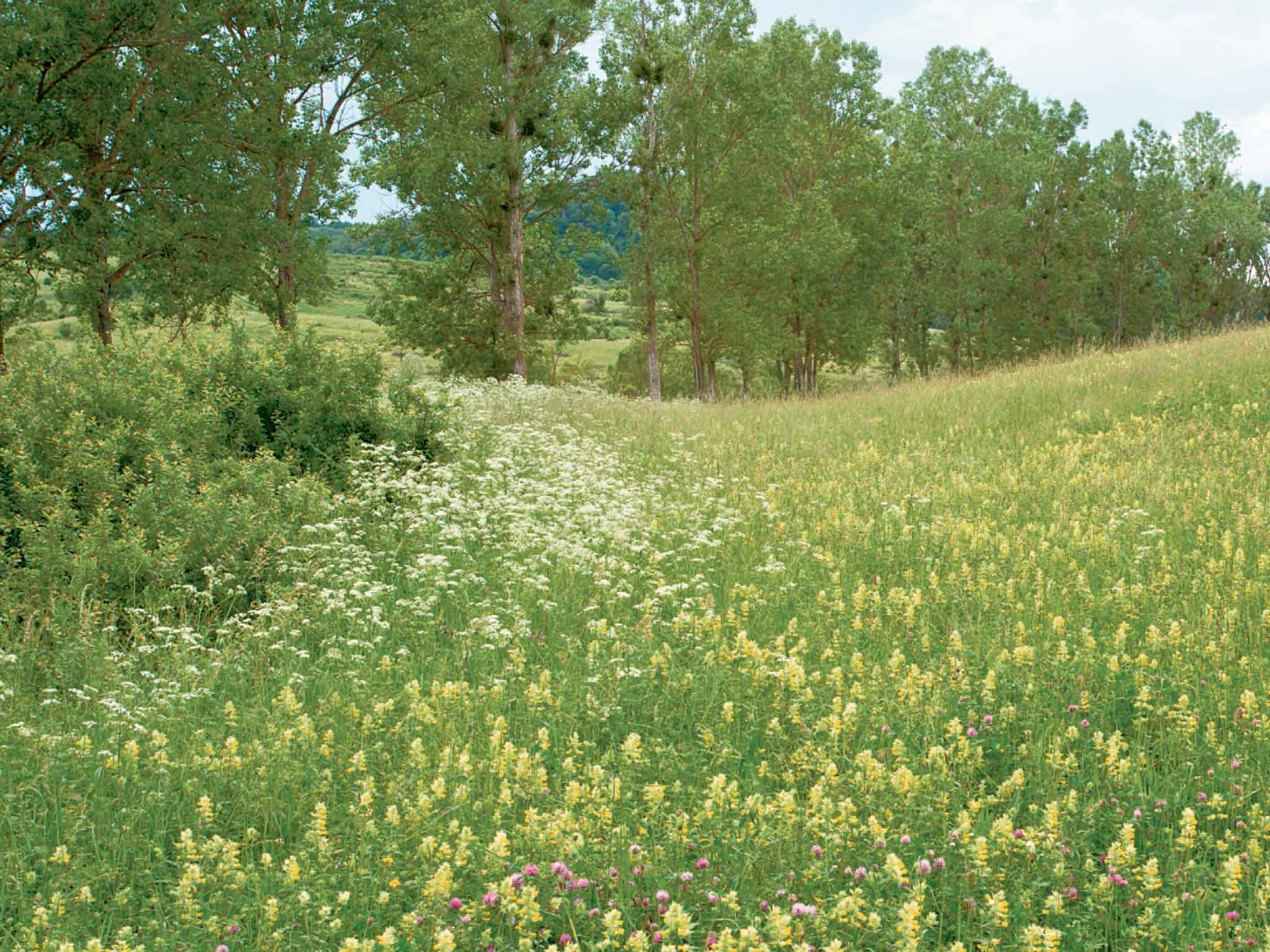Anna Pavord: Yellow rattle seed really stirs things up in the sward
The rattle has been spectacularly successful: within two years the first orchid appeared

Foxpatch is the name of the half-acre paddock that lies below the house, alongside the lane. For decades before we came, it was close-mown to provide bowling and batting practice for the two boys who lived in what is now our house. Both were terrific cricketers.
I had a vision of Foxpatch as an old-fashioned orchard, with trees planted quite far apart on rootstocks that would let them achieve their full size and life span. A pear tree grafted on wild pear stock can live for 200 years. The orchard was as much for the landscape as for the fruit. Old Ordnance Survey maps show most of the land around us was once planted with fruit trees – probably cider apples.
The trees I put in, mostly pear and plum, have grown well with little help from me. That's the advantage of not using dwarfing rootstocks; the trees have more vigour. But the ground underneath the trees requires much more managing. The idea was to let the understorey in Foxpatch grow long, and see what came up. But the grass was more vigorous than I'd expected. From midsummer onwards it grew rank and coarse, collapsing in the rain.
We had two years of this before a friend gave me a small tub of yellow rattle seed, freshly collected from her own orchard. It's an annual flower, unusual in that it feeds partly off the roots of grass, and so slows down the grass growth. I'd seen how effective it could be at Pam Lewis's garden, Sticky Wicket, in north Dorset, but I didn't appreciate how it worked, or what you had to do to help it flourish. Now, after eight years, I'm getting closer to understanding its ways.
The key to success is getting hold of fresh seed and sowing it in early autumn, not spring. It prefers sun to shade and doesn't flourish in very dry patches. It looks like a miniature dead nettle, 25-50cm tall, with small yellow lippy flowers and bright green jagged leaves. Its common name comes from the sound that the seeds make when they are ripe in the seed pod. There are masses of them and they really do rattle as you brush past them.
A farmer wanting a decent crop of hay would not look on yellow rattle as a friend. But a gardener has the luxury of choice. Grass can be a bully, squeezing out wild flowers that we would like to see growing with it. Because rattle, a hemiparasite (partial parasite), feeds on and weakens grass, making it less vigorous, it helps other plants to thrive, and so increases biodiversity.
I wondered if it worked like some lawn weedkillers, and was able to differentiate between monocots (plants that germinate with a single leaf, like grass) and dicots (plants that germinate with two leaves) – but it's actually far more discerning even than that. It associates itself only with grass, not with other monocots such as wild orchids or wild daffodils.
It does best where you can leave grass to grow long until September or early October. By then the rattle will have naturally shed much of its seed. The rest will be shed in the cutting. Scything is the best way to cut long grass, and we did this for some years while we could find a scyther. Now we use a mechanical Allen scythe, a noisy, recalcitrant machine with a long front cutter bar.
If you are starting from scratch you should sow yellow rattle seed only after the long grass has been cut. We then cut Foxpatch again with the Honda a couple more times during autumn, so it comes into spring with the turf tight and short. Rattle seeds are flat brown discs, and quite large. The shape enables the seed to sit close against the ground and, at the same time, expose as much surface as possible to the sun. It's a tiny solar panel, collecting sunlight to trigger germination, but only if it has first been through a cold period in winter.
It germinates between late February and early March, before much else gets going, a distinct advantage in the plant word. If the grass had been left long, the seed wouldn't get the sunlight it needs to sprout. From March through to September, you can't cut the sward, because the rattle needs to complete its growth and set its seed.
The rattle has been spectacularly successful in the half of Foxpatch where I originally sowed it. Oxlips now flourish, along with pignut, knapweeds and magenta vetches. Within two years, the first orchid appeared. This year there were 42 – all southern marsh orchids (Dactylorhiza praetermissa).
Earlier this season, I collected an envelope of rattle seeds and have just chucked it over the other half of Foxpatch. All I need to find now is a super-rattle that feeds on docks…
Join our commenting forum
Join thought-provoking conversations, follow other Independent readers and see their replies
Comments